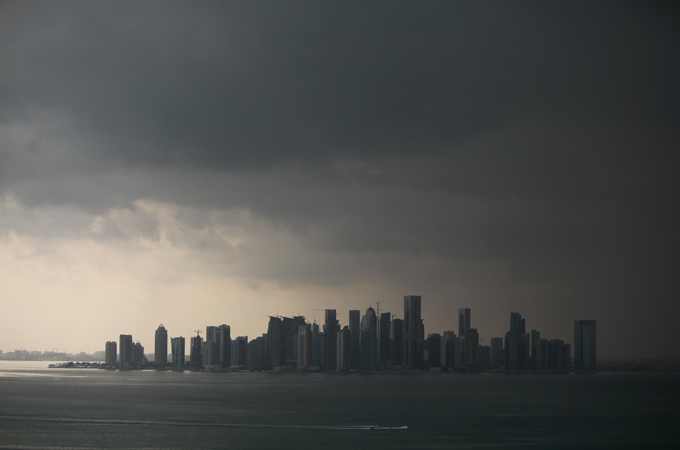Not a mirage – rain falls in Doha
The recent downpour in the Qatari capital – the first since last winter

 |
| Rainclouds over Doha [Ben Foley – Al Jazeera] |
It may not happen very often, but Doha, home of Al Jazeera, had a really wet day on Monday. The rarity of such events caught out many people and there were very few umbrellas and waterproofs in evidence as colleagues made their way into work.
Torrential rain began before dawn and continued through much of the morning before easing in the afternoon. But the puddles from the morning downpour were still to be seen well on into the evening, despite late sunshine.
Keep reading
list of 4 itemsAfter the Hurricane
World’s coral reefs face global bleaching crisis
Why is Germany maintaining economic ties with China?
Fortunately, the rain coincided with the Eid holiday and the roads were relatively traffic-free. Nevertheless, conditions were very slippery as a result of dust and many months of tyre wear, oil and other road deposits. Several minor accidents were reported.
The rain also had an impact on local temperatures. The average maximum temperature in November is around 30 degrees Celsius. But the rain, gusty winds and cloud cover conspired to keep temperatures at around 21 degrees.
Rain in this part of the Arabian Peninsula is usually limited to the December to March period with monthly rainfall averaging out at just under 15 millimetres.
Unfortunately, rainfall reports from Doha airport were not available for Monday, but it is likely that accumulations were in the order of 10 to 15 millimetres in many parts of the city.
The shower was probably the result of a weak upper trough which had been well predicted by many of the computer models as much as 4 days in advance. Al Jazeera weather forecast graphics certainly showed showers well before the event but the intensity of any showers is always open to doubt.
 |
| A more typical view of Doha with downtown visible through the heat haze [Richard Angwin – Al Jazeera] |
On many occasions the threat of showers is countered by the hot, relatively dry air underneath the shower clouds. This often causes much of the precipitation to evaporate long before it can reach the ground.
Unlike its near southern neighbours of Oman and Yemen, Qatar is unaffected by tropical cyclones. Instead, in common with its immediate, much larger neighbour, Saudi Arabia, most of Qatar’s rain originates from weather systems moving in from the Mediterranean or North Africa.
November is when rainfall, although still infrequent, does begin to increase as the Azores high pressure cell – which gives the Mediterranean its fine summer weather – begins to withdraw. This then allows occasional weather systems to penetrate the region.
The wettest month in Qatar is February, but even then, we can only expect just over two rainy days per month and the rainfall average is just 17 millimetres. So Monday’s rain, the first significant fall since back in the winter, was very unusual and it certainly set many locals and expats talking.